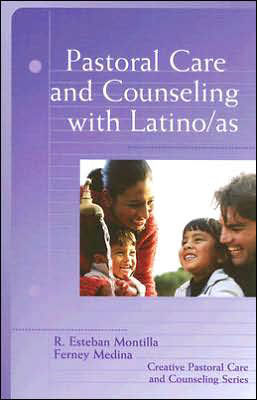
|
Posted July 20, 2006
Book: Pastoral Care And Counseling with Latino/as Authors: R. Esteban Montilla and Ferney Medina Fortress Press. Minneapolis, MN. 2006. Pp.145 An Excerpt from the Preface:
An Excerpt from the Book: The Problem of Assimilation As stated by Melissa Michelson, assimilation is part of the process of cultural learning into which an immigrant enters when in contact with a new culture. This process of "cultural learning" is usually known as acculturation, and acculturation can happen as assimilation or as separation. Acculturation as assimilation is characterized by the rejection of one's own culture in order to adopt the new culture. Acculturation as separation maintains the group's own values and cultural baggage while resisting the process of neglect and finally forgetfulness that is prevalent in assimilation. This process of assimilation is closely linked to the idea of racial and cultural neocolonialism. Only when individuals are willing to accept their own culture as inferior and unworthy will they be willing to sacrifice what stands at the core of their being. We are willing to trade what we are because we see a probable gain in doing so. For instance, in a bilingual home, we choose to speak only English because it will make attending school easier for our children. The family obtains the expected result by paying a high price of not considering the advantage of being bilingual individuals. This cultural trading is commonly done out of shame and embarrassment. Assimilation is certainly a cruel path for us Latino/as seeking to make America our new homeland. It is a violent process that deprives us of what constitutes our beauty and our richness. In this sense, we agree with Michaelson, who signaled the process of separation or, as she prefers to call it, "ethnic competition theory" as the proper path of acculturation for Latino/as. Thus, we retain our values, beliefs, customs, traditions, languages, and so on, while at the same time learning from the new culture. In summary, this ethnic competition theory tells us that we do not need to lose what we are in order to acculturate; we can achieve success in this society without Americanizing our last names; we can be productive and good citizens without trading Cinco de Mayo for Fourth of July; we can be beautiful without blond hair and blue eyes. Assimilation is not the only way to acculturation. We have a choice. The choice is to believe in ourselves as a people. Table of Contents: 1. Background and overview of the Latino/a culture 2. The pastoral caregiver as person 3. A biblical model of pastoral care and counseling 4. The community as healing agent 5. A Latino/a view of suffering and illness 6. Ethics from a Latino/a perspective 7. Education and learning the Latino/a population 8. A Latino/a view of human sexuality 9. Caring for the family 10. Pastoral strategies for issues of discrimination and racism Closing remarks: Listening - choosing the best part |
|
